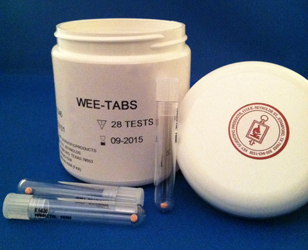Background
The urease test is used to determine the ability of an organism to split urea, through the production of the enzyme urease. Two units of ammonia are formed with resulting alkalinity in the presence of the enzyme, and the increased pH is detected by a pH indicator.
Helicobacter pylori split urea rapidly, usually within 30 seconds. Its rapidity is a key distinguishing factor for H. pylori from other Helicobacter species.
Bacteroides ureolyticus splits urea rapidly, usually within a few minutes, and this is a quick way of identifying this organism.
The urease test may be used to distinguish Psychrobacter phenylpyruvicus from Moraxella species and Corynebacterium diphtheriae which is urease negative from the urease positive Corynebacterium ulcerans and Corynebacterium pseudotuberculosis.
Several species of Enterobacterales, including Klebsiella, Proteus and some Citrobacter spp. produce the enzyme urease and this is widely used as a first step in screening non-lactose fermenting colonies from enteric media.
Other species of Cryptococcus, Trichosporon and Rhodotorula can give a positive result for the urease test. Occasionally, Candida krusei can give a positive result.
The test involves preparing a heavy suspension of the test organism in the presence of urea, following incubation the development of a pink or reddish colour is a positive reaction.
Material safety Data Sheet (En)

